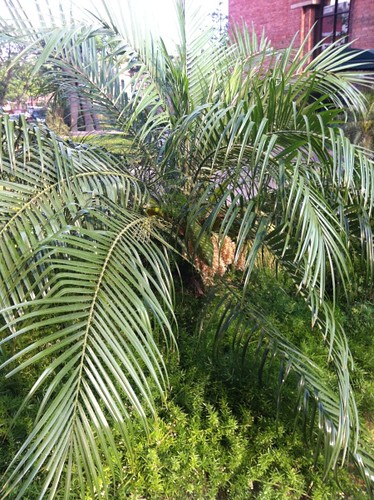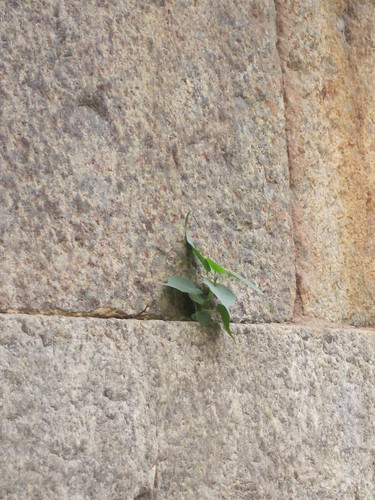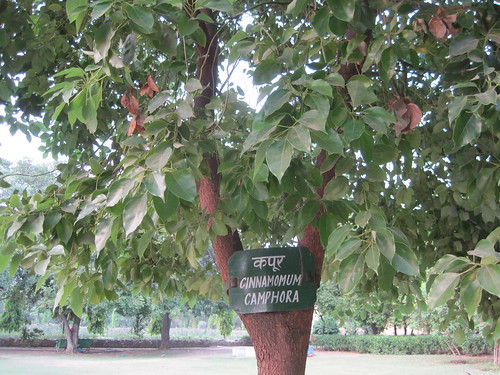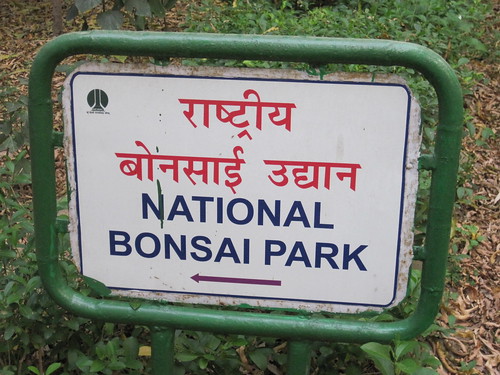I got to spend a week in New Delhi, India in April. I didn't have a lot of free time outside of my work obligations, but I spotted some interesting plants here and there. The part of town I was in was very green, with trees everywhere. Even still, with India being highly vegetarian, I probably
ate more plants than I saw.
My hotel had some nice palm trees on the grounds. When I think of India palm trees aren't the first plants that come to mind - especially far from the coast. However, I know very little about Indian flora.
 |
| Caryota urens, Fishtail Palm |
 |
| Phoenix roebellini growing in a container. Notice the white flowers. |
 |
| Close-up of Phoenix roebellini flowers. |
There was a beautiful lotus pond at the hotel. In the morning and early afternoon the flowers were open. By the heat of the afternoon they would close.
 |
| Lotus pond at the hotel |
My hotel also had a collection of bonsai trees.
 |
| Ficus bonsai at my hotel |
I walked about a mile from the hotel to the Lodhi Gardens. Along the way I passed the India Islamic Cultural Centre, where there was a nice aroid (maybe Epipremnum) growing on the trunk of a deceased tree.
 |
| Probably an Epipremnum |
The Lodhi Gardens is a public park where a lot of families and friends congregate to just enjoy the outdoors. Inside the gardens are several tombs and a mosque, beautiful old buildings dating back to the 1400s.
 |
| Tombs in the Lodhi Gardens |
 |
| A tenacious Ficus religiosa taking root in the cracks of an old tomb. Hopefully someone will yank it out before it turns this tomb into a pile of rocks. |
 |
| Sunset at the Lodhi Gardens |
I wandered around the gardens until sunset, taking photos and enjoying the hot weather.
 |
| Beautiful Cannas in front of a beautiful tomb |
 |
| Stands of bamboo |
 |
| Agave plants forming on the bloom stalk of a parent plant |
Many of the trees in the park were tagged with their species names, including this
Cinnamomum camphora.
 |
| Cinnamomum camphora at Lodhi Gardens |
There were many interesting birds in the park and a large placard that identified some of them. I identified Parakeets, Common Mynah, and House Crow.
 |
| Placard of birds that can be found in the gardens |
 |
| House crow (Corvus splendens) |
Within the grounds of Lodhi Gardens is the "National Bonsai Park." Apparently it closes earlier in the day, so I wasn't able to go inside.
 |
| Closed. |
Down the street from Lodhi Gardens is the Safdarjung Tomb, which is a beautiful example of Mughal architecture. It looks a bit like the Taj Mahal. On the grounds was a beautiful fl0wering tree native to Madagascar.
 |
| Safdarjung Tomb in Delhi |
 |
| Beautiful flowers of Delonix regia, a Madagascan native. |
On the walk back to the hotel I passed a tree with interesting flowers hanging from inflorescences under the canopy at eye level. It was dusk and my camera battery was dead, so I had to use my phone camera with flash, which resulted in a less than stellar picture.
 |
| Flowers of Kigelia africana |
Some friends helped me identify this tree as
Kigelia africana, the Sausage Tree. I have seen these trees at Fairchild Tropical Botanic Garden in Miami, with their large seed pods that look like sausages, but I had not seen them in bloom before.
I really enjoyed my limited leisure time in Delhi and I hope to get to visit India again some day.
























































